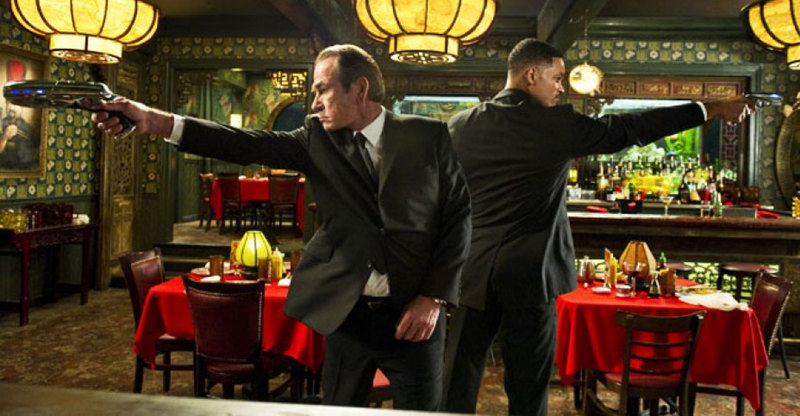I’m a fan of puzzlers and mindbenders—as long as it also feels believable. I start to squirm when a brain teaser teases more than it displays braininess, or when a mindbender bends logic just a bit too much. In such cases the film almost always feels like an exercise in style. For some, that will be enough. I want more.
“Trance” is Danny Boyle’s first feature film since “127 Hours” and “Slumdog Millionaire,” and he takes the concept of a fractured narrative much further than he did in those popular films.
The tagline calls it “a provocative action-packed thrill ride,” and “Trance” is all that. It’s also as mind numbing as it is mind bending during some of the hypnosis scenes, many of which throw a wrench of inertia into an otherwise crisp-paced narrative.
James McAvoy stars as Simon, an art auction house worker whose job it is to grab the most priceless painting from the stage at the first sign of trouble and deposit it in a secure location behind the scenes. Simon narrates much of the film, and we know moments into it that he helped a gang of thieves steal a Goya painting that just sold for $27 million. What we don’t know is why he didn’t just give up the painting according to plan, rather than Tasing the gang’s leader and getting a nasty knock on the head that appears to cause amnesia.
As in “Slumdog Millionaire,” lighting and harsh angles play a large part in suggesting mental states and establishing the film’s style. Vincent Cassell plays Franck, the leader of a group of thugs who first torture Simon to try to make him tell them where he’s hidden the painting, and then suggest that he pick a hypnotist out of the phone book to see if that will help him retrieve the information that will save his life. It turns out that Simon is a compulsive gambler whose debt was paid off by Franck in exchange for the painting. His actions amount to a double cross, but viewers don’t know what would motivate him to do so.
The key character turns out to be Elizabeth (Rosario Dawson), who doesn’t just use hypnosis to change surface behavior. She’s capable of putting people in trance-like states that create realities for them so vivid that when they snap out of it those realities remain as memories of a past they don’t know is synthetic.
That’s the crux of it, and the trance angle adds an interesting dimension to an otherwise routine crime caper flick. I grudgingly give it a 7 out of 10 on the Movie Met scale, and I do so without enthusiasm because of the way you walk away from this feeling slightly scammed.
“Trance” is rated R for sexual content, graphic nudity, violence, some grisly images, and language.
Video:
The sights and sounds of “Trance” are impressive, though, like “Slumdog,” this one reminds me of those tinsel Christmas trees lit by a color wheel. Boyle changes colors from sequence to sequence, and the film has a slick industrial look to it. The AVC/MPEG-4 transfer to a 50GB disc was a good one, with the level of detail as strong in long shots as it is in close-ups or medium shots. Black levels are sufficient enough to pull detail out of the shadows. The only “flaw,” really, may be a stylistic decision. There’s considerable noise in some shots and a soft, underexposed look to other shots. Purposeful, or unintentional? It strikes me as mood-related, so I have to guess the former.
Audio:
The audio is a raucous, pulsing English DTS-HD MA 7.1 that makes you feel as if the back of your TV room is going to start going up and down on lifters, like one of those tricked-out cars. Even the silences seem immersive, coming in sharp contrast as they do to the film’s general loudness. Yet the dialogue is clean, and you never have to toggle up and down with the volume control. Additional audio options are in English Descriptive Audio 5.1, Spanish Dolby Digital 5.1, and French Dolby Digital 5.1, with subtitles in English SDH and Spanish.
Extras:
The main bonus feature is “The Power of Suggestion: Making ‘Trance,’” a four-parter that runs 34 minutes long and covers all bases, from concept and script through production and post-production editing. It’s way better than average.
If you’ve been trying to figure out Danny Boyle, he engages in a little bit of self-analysis in a “Danny Boyle Retrospective” (15 min.) that finds him talking about the approaches he’s used for his films. Anyone who buys into the auteur theory of film will find it fascinating.
The remaining bonus features are seven deleted/extended scenes that run a whopping 16 minutes long, the theatrical trailer, sneak peeks, and, inexplicably, a short (13 min.) film by Spencer Susser that has nothing to do with anything except that Boyle obviously wanted to promote “Eugene,” about a guy who finds a laptop at his D.C. hotel that can grant all of his wishes. Eh.
This Blu-ray comes with a Digital HD DHD (works with UV) copy.
Bottom line:
I’ll admit to a prejudice against any film or book that takes the easy route and basically shrugs off all that happened as a dream, or, in this case, conversely as well. Still, “Trance” does have style, it features some startling scenes of violence and nudity, and the line between reality and the hypnotist’s powers of suggestion do cross interestingly enough in the third act to redeem a sluggish second. But even when one of the characters tosses out an explanation of what you just witnessed, you’re not completely sure what really happened. The ending reinforces the film’s ambiguity, and again, some will find the explanation satisfying enough, while others will feel that they themselves were “Tranced.”


